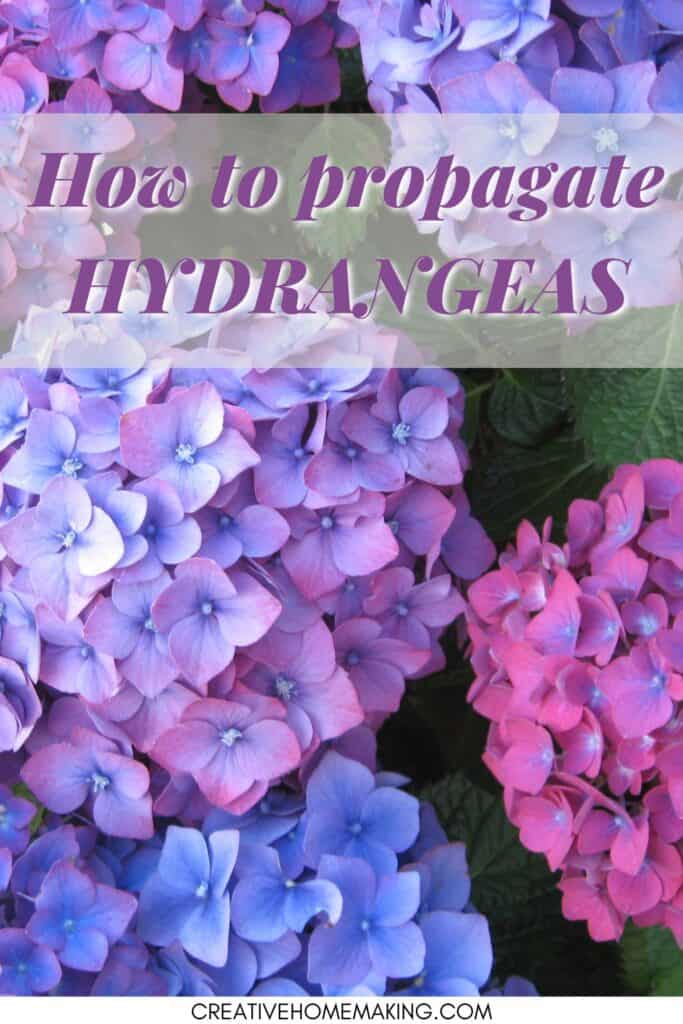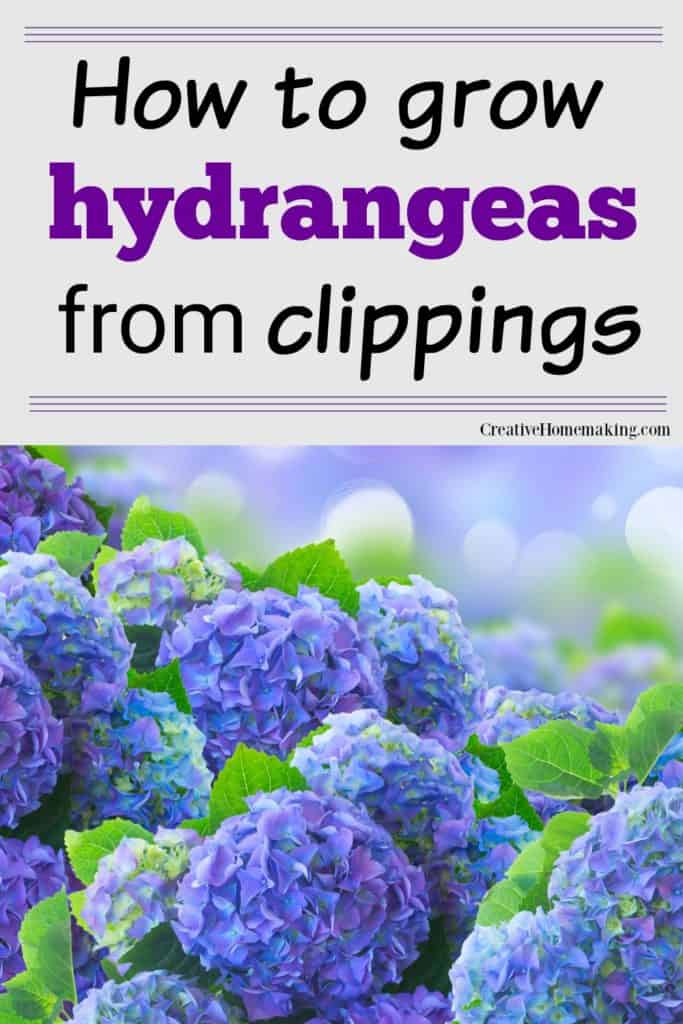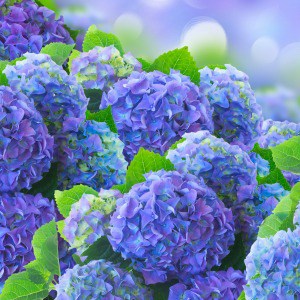If you’re looking to add a beautiful and vibrant touch to your garden, hydrangeas are a great choice. With their large, showy blooms and easy-to-grow nature, they’re a popular choice for gardeners of all levels. In this article, we’ll cover the basics of how to grow hydrangeas, from planting to pruning.
This post may contain affiliate links.
Choosing the Right Hydrangea Variety
When it comes to choosing the right hydrangea variety for your garden, it’s important to consider factors like the amount of sunlight your garden receives, the type of soil you have, and the overall size and shape of the plant. Here are some popular hydrangea varieties to consider:
Related Article: Growing Hydrangeas in Pots
Bigleaf Hydrangea
Bigleaf hydrangeas, also known as mophead hydrangeas, are a popular choice for their large, showy blooms. These hydrangeas come in a range of colors, from pink and blue to white and purple, and are generally well-suited to areas with partial shade. Some popular cultivars of bigleaf hydrangeas include ‘Endless Summer’ and ‘Twist-n-Shout’.
Panicle Hydrangea
Panicle hydrangeas are known for their cone-shaped flower clusters, which are typically white or light green in color. These hydrangeas are generally more tolerant of full sun than other varieties, and are well-suited to areas with well-draining soil. Some popular cultivars of panicle hydrangeas include ‘Limelight’ and ‘Little Lime’.
Oakleaf Hydrangea
Oakleaf hydrangeas are named for their distinctive, oak-like leaves, which turn red or purple in the fall. These hydrangeas are generally well-suited to areas with partial shade, and are known for their cone-shaped flower clusters, which are typically white or pink in color. Some popular cultivars of oakleaf hydrangeas include ‘Alice’ and ‘Snow Queen’.
Related Article: When to Cut the Flowers off Your Hydrangea: A Quick Guide
Smooth Hydrangea
Smooth hydrangeas, also known as Annabelle hydrangeas, are known for their large, round flower clusters, which are typically white or light green in color. These hydrangeas are generally well-suited to areas with partial shade, and are particularly well-suited to areas with moist, well-draining soil. Some popular cultivars of smooth hydrangeas include ‘Incrediball’ and ‘Invincibelle Spirit’.

Climbing Hydrangea
Climbing hydrangeas are known for their ability to climb up walls, fences, and other structures, and are generally well-suited to areas with partial shade. These hydrangeas are known for their delicate, lace-like flowers, which are typically white or light green in color. Some popular cultivars of climbing hydrangeas include ‘Petiolaris’ and ‘Miranda’.
When choosing a hydrangea variety, it’s important to consider the specific needs of each plant, as well as the overall look and feel of your garden. With so many different types of hydrangeas to choose from, there’s sure to be a variety that’s perfect for your garden.
Related Article How to Transplant Hollyhocks
Planting Hydrangeas
When it comes to planting hydrangeas, there are a few important things to keep in mind. In this section, we’ll cover choosing the right soil, planting in the right spot, watering hydrangeas, and fertilizing hydrangeas.
Choosing the Right Soil
Hydrangeas prefer well-drained soil that is rich in organic matter. They also prefer slightly acidic soil with a pH between 5.2 and 6.2. If your soil is too alkaline, you can lower the pH by adding peat moss or sulfur. If your soil is heavy and doesn’t drain well, consider adding sand or perlite to improve drainage. Measure the pH of your soil with an inexpensive soil pH meter.
Related Article: What to Plant with Hydrangeas
Planting in the Right Spot
When choosing a spot to plant your hydrangeas, look for an area that gets morning sun and afternoon shade. Hydrangeas can tolerate full sun, but they will need more water and may not bloom as well. Make sure the spot you choose has well-drained soil and is not prone to standing water.

Watering Hydrangeas
Hydrangeas need consistent moisture, but they don’t like to be waterlogged. Water your hydrangeas deeply once a week, and more often during hot, dry weather. Avoid getting water on the leaves, as this can lead to fungal diseases.
Fertilizing Hydrangeas
Hydrangeas benefit from fertilization in the spring and summer. Use a balanced fertilizer with equal amounts of nitrogen, phosphorus, and potassium. Avoid fertilizers that are high in nitrogen, as this can lead to lots of leaf growth but few blooms. Follow the instructions on the fertilizer package for application rates.
Related Article: How to Divide Daylilies
Caring for Hydrangeas
Hydrangeas are beautiful and easy to grow, but they do require some care to thrive. Follow these tips to ensure your hydrangeas stay healthy and vibrant.
Pruning Hydrangeas
Pruning hydrangeas is essential for maintaining their shape and promoting healthy growth. The timing and method of pruning depend on the type of hydrangea you have. Most hydrangeas bloom on old wood, which means they set their flower buds in the fall. If you prune them in the spring, you risk cutting off those buds and losing the blooms for the year.
Here are some general pruning tips for different types of hydrangeas:
- Bigleaf hydrangeas (Hydrangea macrophylla): Prune after they finish flowering in the summer. Cut back the stems that bloomed to the first set of healthy leaves.
- Panicle hydrangeas (Hydrangea paniculata): Prune in late winter or early spring before new growth appears. Cut back the stems to the desired shape and size.
- Oakleaf hydrangeas (Hydrangea quercifolia): Prune after they finish flowering in the summer. Remove any dead or damaged wood.
- Smooth hydrangeas (Hydrangea arborescens): Prune in late winter or early spring before new growth appears. Cut back the stems to the desired shape and size.
Related Article: Do Hydrangeas Need to Be Cut Back for Winter?
Mulching Hydrangeas
Mulching is important for hydrangeas because it helps retain moisture in the soil, suppresses weeds, and regulates soil temperature. Apply a 2-3 inch layer of organic mulch, such as shredded leaves or bark, around the base of the plant. Avoid piling the mulch against the stem, as this can promote rot.
Related Article: How to Fertilize Hostas
Dealing with Pests and Diseases
Hydrangeas are generally resistant to pests and diseases, but they can still be affected by certain issues. Here are some common problems and how to deal with them:
- Aphids: Spray the plant with a strong stream of water to dislodge the aphids. You can also use insecticidal soap or neem oil.
- Powdery mildew: This fungal disease appears as a white powdery coating on the leaves. Remove any infected leaves and spray the plant with a fungicide.
- Root rot: This fungal disease is caused by overwatering or poor drainage. Improve the soil drainage and avoid overwatering.
Related Article: How to Make Hydrangeas Blue: Tips and Tricks for Achieving Vibrant Blue Blooms
Winter Care for Hydrangeas
Hydrangeas are generally hardy in USDA hardiness zones 3-9, but they still need some protection in the winter. Here are some tips for winter care:
- Don’t prune the hydrangeas in the fall, as this can remove the buds that will bloom in the spring.
- Apply a 2-3 inch layer of mulch around the base of the plant to protect the roots.
- In areas with harsh winters, you can cover the plant with burlap or a frost blanket to protect it from freezing temperatures.
- Keep the soil moist but not waterlogged, as this can cause the roots to rot.
- In areas with low humidity, you can mist the leaves with water to prevent them from drying out.
Getting the Best Color from Your Hydrangeas
If you’re looking to grow hydrangeas that are bursting with color, there are a few things you can do to help them thrive. Here are some tips to get the best color from your hydrangeas.
Changing Hydrangea Colors
Did you know that you can change the color of your hydrangeas? Some varieties of hydrangeas will adjust their flower color based on the nutrient values of the soil. For example, if you want blue hydrangeas, you’ll need to grow them in acidic soil with a pH of 5.5 or lower. On the other hand, if you want pink hydrangeas, you’ll need to grow them in neutral to alkaline soils with a pH of 6.5 and higher.
Related Article: Best Shade Plants for a Shady Side of a House
To change the color of your hydrangeas, you can adjust the pH of the soil. You can do this by adding soil amendments like sulfur or lime. If you want blue hydrangeas, you’ll need to add sulfur to the soil to make it more acidic. If you want pink hydrangeas, you’ll need to add lime to the soil to make it more alkaline.
Maintaining Hydrangea Colors
Once you’ve achieved the desired color for your hydrangeas, it’s important to maintain it. One way to do this is to test the pH of the soil regularly. You can use a soil pH meter to test the soil and make sure it’s at the right pH for your hydrangeas.
Another way to maintain the color of your hydrangeas is to make sure they’re getting enough water. Hydrangeas need plenty of water to thrive, especially during hot, dry weather. Make sure to water your hydrangeas deeply and regularly, especially during the summer months.
Finally, it’s important to provide your hydrangeas with the right nutrients. You can do this by adding a slow-release fertilizer to the soil. Look for a fertilizer that is specifically designed for hydrangeas and follow the instructions on the package.
Propagation of Hydrangeas
Hydrangeas are beautiful and popular flowering shrubs that can be propagated in a variety of ways. In this section, we will discuss three methods of propagating hydrangeas: growing hydrangeas from cuttings, growing hydrangeas from seed, and transplanting hydrangeas.
Related Article: Why Doesn’t My Hydrangea Bloom?
Growing Hydrangeas from Cuttings
Growing hydrangeas from cuttings is a popular and easy way to propagate these beautiful plants. To do so, follow these simple steps:
- Choose a healthy stem from the hydrangea plant that has not yet bloomed.
- Cut a 6-8 inch piece of the stem, making sure to include a few leaves at the top.
- Remove the leaves from the bottom half of the stem.
- Dip the cut end of the stem in rooting hormone.
- Plant the stem in a pot filled with well-draining soil.
- Water the cutting well and keep the soil moist.
- Place the pot in a bright, but not direct, sunlight.
- Wait for the cutting to develop roots, which usually takes a few weeks.
- Once the cutting has rooted, it can be transplanted into the ground or a larger pot.

Growing Hydrangeas from Seed
Growing hydrangeas from seed is another way to propagate these plants. However, it is a bit more challenging than growing hydrangeas from cuttings. Here are the steps to follow:
- Collect the hydrangea seeds after they have dried on the plant.
- Soak the seeds in water for 24 hours.
- Plant the seeds in a pot filled with well-draining soil.
- Cover the pot with plastic wrap to create a greenhouse effect.
- Place the pot in a bright, but not direct, sunlight.
- Keep the soil moist and wait for the seeds to germinate, which can take several weeks.
- Once the seedlings have developed a few leaves, they can be transplanted into the ground or a larger pot.
Transplanting Hydrangeas
Transplanting hydrangeas is a great way to propagate these plants if you already have an established plant. Here are the steps to follow:
- Choose a healthy stem from the hydrangea plant that has not yet bloomed.
- Cut a 6-8 inch piece of the stem, making sure to include a few leaves at the top.
- Remove the leaves from the bottom half of the stem.
- Dip the cut end of the stem in rooting hormone.
- Plant the stem in a pot filled with well-draining soil.
- Water the cutting well and keep the soil moist.
- Place the pot in a bright, but not direct, sunlight.
- Wait for the cutting to develop roots, which usually takes a few weeks.
- Once the cutting has rooted, it can be transplanted into the ground or a larger pot.
By following these simple steps, you can propagate your own hydrangeas and enjoy their beauty for years to come.
Follow my Gardening board on Pinterest.




